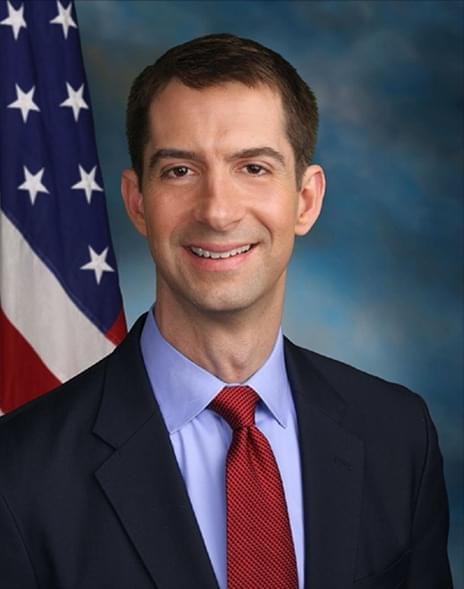The 2024 Prospective Plantings Report, compiled by USDA’s National Agricultural Statistics Service, found that acreage for most of the country’s principal row crops will likely only shift a few percentage points one way or the other this year. The report is based on self-reported planting intentions from growers across the United States. Nationally, projected crop acreage fell about 2 percent in 2024, to about 313.3 million acres.
Arkansas corn and wheat acreage take a nosedive
Arkansas intended corn acreage fell sharply, down 27 percent, from 850,000 acres to 620,000 acres. Wheat acreage also fell significantly in the state, down 41 percent from 230,000 acres to 135,000 acres. Nationally, corn acreage fell 5 percent to about 90 million acres, while producers said they planned to plant nearly 47.5 million acres of wheat, about 96 percent of what was planted in 2023.
Jason Kelley, extension wheat and feed grains agronomist for the University of Arkansas System Division of Agriculture, said that the significant drop in corn acreage was no surprise, given that the state was coming off a near-record-high year for acreage.
“Our acreage goes up and down every year,” Kelley said. “Last year, 2023, was the second-highest acreage we’d had since the early 1950s.”
He said profitability was likely the main driver for growers moving away from corn throughout the region.
“It looks like the whole Southeast was off quite a bit — 15 to 27 percent,” Kelley said. “The Mid-South was down 20-27 percent. So, it looks like most of our surrounding states had the same mindset.”
Similarly, wheat acreage was down in the East, falling in all but seven states.
Hunter Biram, extension agricultural economist for the Division of Agriculture, also said the drop in Arkansas corn acres, paired with a rise in soybean acres, was expected.
“Two factors that typically influence this shift are crop rotations and expected margins, with expected margins likely the driving force behind any acreage shifts beyond normal,” Biram said. “Last year, corn margins were far more favorable compared to soybeans, and that showed up in not only the Prospective Plantings report but also in the Crop Acreage Report released last June.
Over the past 20 years, soybean and corn acreage have both grown in the United States, with corn typically leading by as much as 50 percent some years. Over that span, however, soybean acreage has tightened the gap, actually tying the national acreage in 2017 at about 90 million acres each.
“This year, soybean margins appear more favorable, albeit not by much compared to corn,” Biram said. “Last year, the favorable margins were mostly driven by a relatively high corn-to-soybean price ratio, meaning corn prices were much higher relative to soybean prices. This year, there isn’t a crop price to get too excited about, but prices for key fertilizers have fallen to levels similar to the period prior to the Russian invasion of Ukraine.”
Projected Arkansas hay harvests appear to be keeping pace with the previous year, with growers expecting to harvest about 1.15 million acres, 99 percent of 2023’s total.
Arkansas long grain rice surges, medium grain falls back
Arkansas intended rice acreage shifted only slightly, growing 1 percent over 2023 acreage to 1.45 million acres. However, grower sentiment appeared bullish on long grain rice, jumping 11 percent from 2023 acreage to a projected 1.36 million acres, while pulling back on medium grain, falling by 58 percent to just 90,000 acres.
Nationally, planned rice acreage grew 1 percent to more than 2.93 million acres.
Jarrod Hardke, extension rice agronomist for the Division of Agriculture, said the report’s outlook for rice was in line with spring estimates.
“Long grain rice appears to be a profitable option, but seed supply issues are hindering further increases in acres,” Hardke said. “Medium grain is in lower demand for this year with few contracts or pricing premiums available in the wake of high acres and production last year.”
Biram added that the ambiguity of global markets is likely affecting acreage decisions.
“Among many drivers in rice acreage, one could be the possibility that India reverses their export ban on non-basmati rice, which was put in place in July 2023,” Biram said. “While that proved to be favorable for rice prices in the short run, with some cash prices reported at over $8 a bushel in the post-harvest window of January and February, the new crop futures contracts for rice are already indicating prices could land around $6.75 per bushel or lower. This is because when export supply is reduced in the global market, prices increases.
“Conversely, when export supply increases due to a lift on an export ban, for example, prices fall,” he said. “Perhaps producers were able to lock in price guarantees through area crop insurance, such as Enhanced Coverage Option or Margin Protection, trying to capture the tail end of a months-long price rally driven by the export ban. Otherwise, I suspect crop rotations and less-favorable corn margins are driving the increase in long grain rice acres.”
Arkansas soybeans rise steadily
Arkansas soybean acreage grew slightly, rising 4 percent over 2023 to 3,100 acres. This puts the state’s growers slightly ahead of the national soybean acreage outlook, which rose 3 percent to about 86.5 million acres.
Jeremy Ross, extension soybean agronomist for the Division of Agriculture, said it was no surprise to see Arkansas soybeans return to the “plus side” of 3 million acres.
“Historically, we’ve been above 3 million acres for the last several years, other than 2018-2019,” Ross said. “That’s when we had a lot of rainfall — the fall of 2018 and progressing into 2019. We had a lot of flooding issues, and 2019 was the lowest soybean acreage we’ve had since 1960.
“I think all of it points to China,” Ross said of the high acreage numbers. “China is our No. 1 destination for soybean exports. As their population increases, the demand for soybeans increases.”
He said much of 2023’s outstanding soybean yield was due to growers taking advantage of the early planting window, and that he foresees a similar fortune this year.
“Beans have been planted for almost a solid month in Arkansas,” Ross said. “Some of them look good, some not so good, mainly due to cooler weather. We had pretty much the earliest start ever last year, and we had record yields. I think some guys proved that when your beans are planted earlier, the yield potential is a lot better than delayed planting.
“Over the next seven days or so, it looks to be warm and dry, so I think there’s going to be a lot of land prep, and maybe some more beans planted,” Ross said Thursday. “I’m anticipating another good year.”
Peanuts hold, cotton grows
Arkansas producers appear to be holding steady, again planning to plant 35,000 acres of the legume, the same acreage as 2023.
Travis Faske, extension plant pathologist and acting peanut agronomist for the Division of Agriculture, said that peanut acreage throughout the state will likely be higher than the reported intentions.
“I still think we will be a few thousand acres north of 35,000 acres by the end of planting season, as the two primary peanut buying points in the state have indicated an increase in acreage,” Faske said.
Planned Arkansas cotton acreage grew 6 percent over 2023 numbers to 540,000 acres. This exceeded the national outlook, which grew 4 percent to more than 10.6 million planned acres.
“I suspect the reason cotton acreage increased by 6 percent is because cotton lint prices are more favorable compared to last year, but nothing like what we saw in 2021-2022,” Biram said.
“While crop rotations can explain most of the corn-soybean rotation, cotton acreage can likely be explained by the fact that a cotton farmer is going to farm cotton regardless of the price, due to the lack of versatility in equipment used to produce cotton,” he said. “The cotton lint price may shift acreage, but the degree of that shift will depend on what the cotton lint price is.”
To learn about extension programs in Arkansas, contact your local Cooperative Extension Service agent or visit www.uaex.uada.edu. Follow us on X and Instagram at @AR_Extension. To learn more about Division of Agriculture research, visit the Arkansas Agricultural Experiment Station website: https://aaes.uada.edu/. Follow on X at @ArkAgResearch. To learn more about the Division of Agriculture, visit https://uada.edu/. Follow us on X at @AgInArk.























